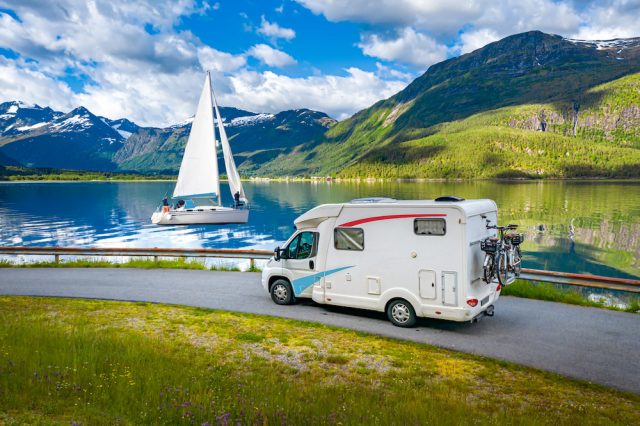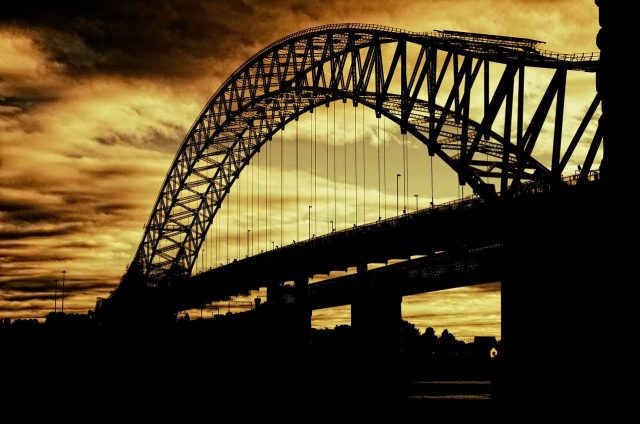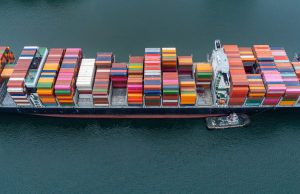What is the future of BIM in the Rainscreen Cladding Industry?
BIM can be used to design and document entire buildings including the full infrastructural designs. Every single detail can be modelled in BIM, right down to the material selected, the thickness of that material and the finish used. This can be used to explore design options, to create visualisations to bring a project to life before it is built and even to test certain build ups and how they will look in practice.
BIM is no longer new in the construction industry. If you work within the architectural or construction contracting field, it is very likely that you have seen or heard about BIM objects, 3D models and Common Data Environment (CDE).
But here’s the true question: Are you using BIM to its full, competitive edge?
Sotech, are advocates of BIM. Not only can it help all parties in the supply chain get the job completed on time and within budget, but using BIM to its full potential can lead to huge cost savings and time efficiencies in designing and constructing a building.
In house, we have seen BIM objects revolutionise the way a building is conceived and built, and dramatically cut lead times from conception through to manufacturing. This is made possible not simply because architects and designers have immediate access to the latest models specified in the project, but as a direct result of the relationships built during the design stage.
Sotech doesn’t just advocate using BIM, they also advocate working directly with architects during the BIM modelling stage to ensure every aspect of the model is feasible and cost effective in practice and not just in principle. By doing this, costly mistakes can be avoided, cost efficiencies can be highlighted, and alternative solutions can be tested quickly and effectively.
The truth is that this real competitive advantage of BIM isn’t yet being utilised to its full potential industry wide. In this article, we would like to make a case for both (1) making more use of BIM Objects in all stages of your project and for (2) engaging the Sotech team much sooner in the process to input and advise on the best possible solution for your design.
WHAT IS BIM?
Keeping this brief, BIM stands for Building Information Modelling, and was originally introduced more than a decade ago to make the workflow in a construction project more efficient and less wasteful. The three things that can be saved in abundance by using BIM are energy, carbon and money.
BIM is used in different ways by manufacturers, architects and main contractors, and every individual has a preferred way of using BIM tools and techniques. Generally speaking, BIM is a process that can be tailored to suit people depending on their core functionalities.
Using BIM, participants can improve document management, coordinate actions and map out the entire lifecycle of a project, from planning and design to building, operations and ongoing maintenance.
However, the most effective use of BIM from a manufacturer’s perspective is the accuracy of the products being selected. When used to its full potential, BIM can be used to design and document entire buildings including the full infrastructural designs. Every single detail can be modelled in BIM, right down to the material selected, the thickness of that material and the finish used. This can be used to explore design options, to create visualisations to bring a project to life before it is built and even to test certain build ups and how they will look in practice. The model created can then be used to generate the full design documentation for construction.
WHAT ARE THE MAIN BENEFITS OF BIM?
The main benefits of BIM will vary, depending on your objectives as an organisation. However, there are two main benefits to using BIM:
CapEx, relating to design and capital expenditure. By modelling a project, using BIM objects supplied directly by the manufacturers, a user can cost up a project effectively and efficiently. The costs go beyond the cost of material to, for instance, the energy required to produce the materials and carbon footprint created as a result. By tweaking the design and working closely with manufactures, like Sotech, users can see how different materials and processes can affect the overall cost and environmental impact of a building. This means that designers can specify the most cost-effective material and system, exploring different options in the early design stages. More information = more informed decisions.
OpEx, relating to operations and running the building. The asset information for each material and element of the build is digitised through BIM documentations for the Facility Management (FM) team. This means if during the lifespan of a building a lift or even a door handle needs replacing, the FM team can look through and search for the manufacturer who provided the specific product and either re-order or use the warranty to replace the specific component.
The combination of CapEx and OpEx benefits produces higher quality work, increased productivity and stronger project coordination. This in turn leads to improved relationships and further opportunities for collaboration on other projects.
WHAT ARE THE BIM LEVELS?
There are currently 4 levels of BIM:
Level 0 BIM
In its simplest form, level 0 means unmanaged CAD. 2D CAD drafting only is utilised, mainly for production information. The majority of the industry is already well ahead of this.
Level 1 BIM
This comprises a mixture of 3D CAD for concept work, and 2D for drafting of statutory approval documentation and production information with a collaboration tool providing a common data environment.
Level 2 BIM
Is an information exchange process which is specific to the project and coordinated between various systems and project participants. This method of working has been set as a minimum target by the UK government for all work on public-sector work.
Level 3 BIM
The jump from Level 2 to Level 3 is a big step and is unlikely to happen in the next five to ten years, this highlights that it is likely to be an “integrated” solution around open standards such as IFC with everyone working from a single model.
AT WHAT STAGE CAN SOTECH GET INVOLVED IN A PROJECT?
Typically, there are five main design stages:
Start – creating an overall picture of the project
Concept – outlining the ideas for the building
Design – getting into the crux of the building’s look, form and shape
Technical design – increasing the information in the model to show how the project will work in principle
As built – what the final building will look like, down to every detail with all the information required to run and manage the building.
With new customers, Sotech is typically engaged at stage 4 or 5 AKA technical design or just after design intent stage. There are invariably large edits to make at this stage. Perhaps a material for the rainscreen cladding has been specified at the wrong thickness. Perhaps a certain bend isn’t fully possible in that unique build design. Perhaps the combination of materials and finish won’t give the wind protection needed. Changes like this can take weeks to correct and can have surprising consequences to the project cost and timescales.
In truth, the Sotech team aim to be involved from the initial conception of the project, advising on the best possible combination of rainscreen systems, materials and finishes to suit the look, the budget and the timescales for the given project. Sotech can even advise and highlight common issues with other elements of the build.
When the model is then completed, there are no mistakes to correct and no surprise adjustments to the budget. The model will work, and we can move directly to documentation and manufacturing. This can save huge amounts of time, money and energy. In this respect, BIM isn’t just about the model, it’s about different parties working together during a project to arrive at the best possible solution for the best possible price.
Engaging Sotech at an early stage allows them to make suggestions, spot opportunities for efficiencies and crucially, highlight any risks or mistakes. That way, when the model is complete, everyone can be certain it will work in practice and not just in principle.
As a business, Sotech has been working with and advising clients for four decades and we are BIM compliant, following the NBS rules and IFC rules of government for BIM compliance. Each of the unique Optima rainscreen cladding solutions is represented in BIM. If you are about to start a new project, we’d welcome a conversation about how we can advise you from the outset.
WHAT IS THE FUTURE OF BIM?
BIM level 2 was formally mandated by government since April 2016 and over the last few years it is safe to say that 3D modelling is now fully realised. We envisage that the next focus will be on dimensions of BIM (above 3D) prior to BIM level 3. The next ambition is linking 4D into our 3D model where the project programme is linked to the federated model and schedule is updated in real time. This will have huge additional benefits. For example, it will be easier and faster to plan for and arrange storage, shipping and handling of materials because exact weights and sizes can be calculated in real time.
Once this is fully achieved and understood, the next important dimension is 5D which is related to costs, meaning to add the full cost, size and weight of the component parts into the model. Using the model to cost the jobs by linking 3D to 5D. Sotech can offer this service now, by extracting the BIM model and using an Excel programme to calculate the cost. In the near future, this will be built directly into BIM.
Internally, Sotech is very excited about the evolution of BIM and continues to invest heavily in the development of its models and the training of its team. They are committed to having the right software, the right skills and the right experience in house to help our customers build buildings that are safe, stunning and sustainable.
To be frank, BIM will become the norm in the construction industry over the next five years and so any time spent learning and using the system available in more advanced ways will provide even more advantages in the future.
WHAT ARE THE THREE MOST COMMON MISTAKES MADE WITH BIM MODELLING?
Sotech have looked at over many models in the last few years. Here are the top three mistakes we see most commonly:
The models they receive often lack many manufacturing detail where they could have these ironed out if we were to be involved earlier in the project.
The thickness of the material isn’t possible in certain projects. For example, an architect might have specified 2mm, when 3mm is required for that material to function as desired. When these changes are made, it affects everything in the model because it is all linked, and this can take days to correct.
Clashes between elements – sometimes Sotech see notch details or panels that clash with each other because the return isn’t correct. Sometimes we see panels being overlapped the wrong way around making them ineffective. Sometimes we see fire barriers or rail carriers placed upside down or the wrong way around. By spotting this on one floor of a building, the corrections can be made and then correctly replicated as each new floor is built.
If the model is correct on completion, we can go direct from the 3D model to the shop floor. This saves a lot of time and money in the design stage. Any mistakes can take days or weeks to rectify. And they’re 100% avoidable. That’s why we recommend calling Sotech as early as possible and having an experienced member of our team review the model in stages, rather than on completion. Our ultimate goal, for our teams and the customer, is to receive a model, check it and send it to the machine. This is only possible when BIM Objects are used to its full potential and we’re invited to review models in stages, rather than on the final completion.
WAYS SOTECH CAN HELP:
Sotech provide support and advise early doors to their customers during the conceptual design stage. Ensure the components suggested at the design intent stage are feasible to manufacture. Help and support customers to specify the right Optima system for their projects. Provide our customers with BIM objects and other 3D templates.



















